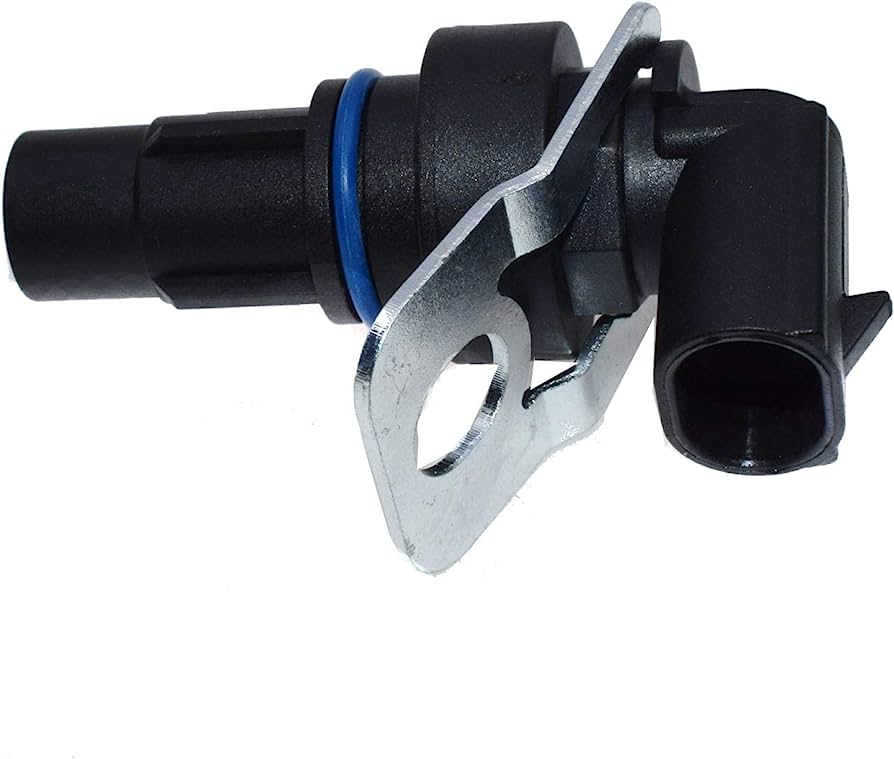The transmission speed sensor is an essential component of the powertrain control module (PCM) system in vehicles. It measures the rotation speed of the transmission shaft and sends this information to the PCM, which uses it to determine the apropriate shifting of gears. In this article, we will discuss the location of the transmission speed sensor, its importance, and the signs of its failure.
The location of the transmission speed sensor varies depending on the make and model of the vehicle. In most vehicles, it is located on the transmission housing or the transaxle case. To locate the sensor, you may need to refer to the owner’s manual or consult with a mechanic. It is essential to note that some vehicles have multiple speed sensors, and they are located in different areas.
The transmission speed sensor plays a vital role in the proper functioning of the transmission system. It provides critical information for the PCM to determine the speed of the vehicle and the appropriate gear to engage. When the sensor fails, the PCM will not receive the correct information, leading to transmission problems. One of the most common symptoms of a faulty speed sensor is the erratic shifting of gears. The transmission may shift more quickly or roughly than expected.
Another sign that the speed sensor is failing is the malfunction of the speedometer. The speedometer relies on the information from the speed sensor to display the vehicle’s speed. When the sensor fails, the speedometer will stop working or give inaccurate readings.
Replacing a speed sensor is not a complicated process and can be done by a skilled mechanic. However, it is essential to ensure that the correct sensor is replaced, as some vehicles have multiple sensors. If you have experience in car repairs, you may be able to replace the sensor yourself by following the instructions in the owner’s manual.
The transmission speed sensor is a crucial component of the vehicle’s transmission system. Its location varies depending on the make and model of the car, and it is essential to know the signs of its failure. When the sensor fails, the PCM will not receive the correct information, leading to transmission problems. Replacement of the sensor is a straightforward process that can be done by a skilled mechanic or DIY enthusiast.
What Happens When Your Transmission Speed Sensor Goes Out?
When the transmission speed sensor goes out, it can have seeral impacts on your vehicle’s performance. Here are a few things that may happen:
– The transmission may shift more quickly or roughly than expected. This is because the powertrain control module won’t be able to control the gears correctly without information about the vehicle’s speed.
– Your vehicle’s speedometer may stop working or may be inaccurate. This is because the speed sensor also sends information to the instrument cluster, which displays the vehicle’s speed.
– The check engine light may come on. This is because the powertrain control module relies on information from several sensors to make decisions about how the engine and transmission should operate. If it doesn’t get the information it needs from the speed sensor, it may trigger a warning light.
If you suspect that your transmission speed sensor has gone out, it’s important to have it diagnosed and repaired as soon as possible. Driving with a malfunctioning sensor can cause further damage to your transmission and other components of your vehicle.

Is It Easy To Replace A Transmission Speed Sensor?
Replacing a transmission speed sensor is generally an easy task. The speed sensor is typically located on the outside of the transmission and is usually held in place by a bolt. Once the bolt is removed, the sensor can be easily pulled out of the transmission. It is important to note that different vehicles may have slightly different procedures for accessing and replacing the speed sensor. It is alwys recommended to consult the vehicle owner’s manual or a professional mechanic for specific instructions. However, in general, replacing a speed sensor is a quick and simple process that can be completed with basic tools and minimal mechanical knowledge.
Can A Speed Sensor Stop Transmission Shifting?
A failed Vehicle Speed Sensor (VSS) can cause the transmission to stop shifting or shift late and harsh. This is because the VSS provides the necessary information to the transmission control module to determine the appropriate shifting points based on the vehicle speed. Without this input, the transmission may not know when to shift or may shift at incorrect times, leading to various transmission problems. Therefore, it is essential to have the VSS checked and replaced if necessary to ensure proper transmission operation.
Conclusion
The transmission speed sensor is a crucial component in ensuring the smooth operation of your vehicle’s transmission. It measures the speed at which the vehicle is moving and sends that infrmation to the powertrain control module, which controls the shifting of gears. The location of the speed sensor can vary depending on the make and model of your vehicle, but it is typically located on the transmission or transaxle. When the speed sensor fails, it can cause issues with shifting and can even cause the transmission to stop working altogether. Therefore, it is important to regularly check the condition of your speed sensor and replace it if necessary to avoid any potential problems.
